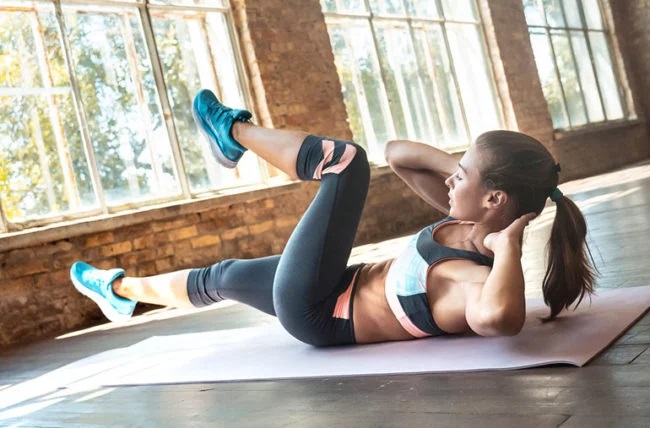Some people are motivated by the social aspects of working out at the gym. Others worry about parking, gym fees or what may feel like critical glances from other people. You don’t really need to go outside the comfort of your own home to exercise and get fit.
Before You Begin
Warm up for at least three to five minutes before you start and cool down at the end. Engage your abdominal muscles as you exercise to build up your core strength. Drink plenty of water to stay hydrated and avoid sitting down. If you need to take a break, rest by walking until your heart rate returns to normal.
Before you begin a new workout routine, check with your primary care physician to make sure it’s safe to do so, and follow any guidelines he or she provides.
Strength-Training Exercises
Full-body exercises build muscle and cardiovascular strength.
THE PLANK – Lay face down on the ground. With your arms and legs extended, lift your body up, so your weight is rested on your hands and tiptoes. Hold for 30 seconds. Repeat, working your way up to a full minute.
SQUATS – Start in a standing position with your feet shoulder width apart. Bend your knees until they’re in line with the tips of your toes at a 90-degree angle. Hold for a moment, then stand. Repeat for 15 repetitions.
PUSH-UPS/SIT-UPS – Push-ups (starting on the knees or in a plank position) build bicep- and tricep- muscle strength, while sit-ups build your abdominal strength.
Cardio Exercises
The U.S. Centers for Disease Control and Prevention states that to ensure you’re getting all the benefits of cardio exercise; your target heart rate should be 64%-76% of your maximum heart rate for moderate-intensity physical activity and 77%-93% for vigorous physical activity.
JUMPING JACKS/JUMPING ROPE – These traditional moves will get your heart rate going. According to the U.S. National Heart, Lung, and Blood Institute, jumping rope for just 15 minutes is considered a moderate-intensity workout. No jump rope? Mimic the motion and get the same results!
MOUNTAIN CLIMBERS – Start in a plank position. Draw your right knee up toward your right arm, then back to starting position. Do the same with your left knee. Repeat quickly for 15 repetitions.
STAIR-CLIMBING – Climbing up and down stairs in your home will strengthen your thigh and calf muscles, in addition to your heart. If you’ve got stairs leading to your apartment or inside your home, you’re in luck. Carrying heavy loads of groceries or other packages up the stairs could be considered a vigorous workout, according to the U.S. Department of Health and Human Services (HHS). It recommends 75-150 minutes of this type of workout or 150-300 minutes of moderate-intensity exercise per week in its publication, Physical Activity Guidelines for Americans. No stairs? Simply jog or march in place.
TIP: Take it up a notch by trying short intervals of cardio exercises, mixed with strength-training exercises.
HealthDay News contributed to this article.
Weight Loss Exercises You Can Do At Home










